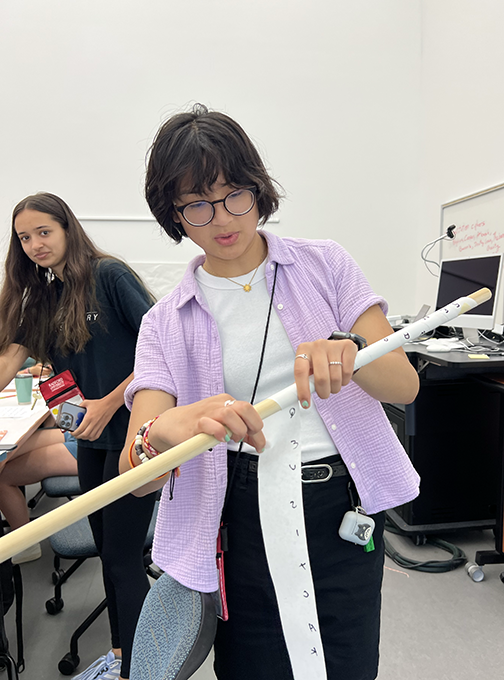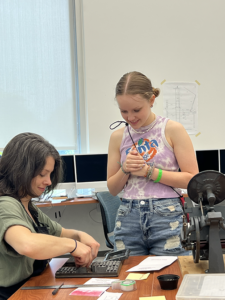Exploring communications tech — writing, printing, signal flags, the telegraph, radio and the movies — was the open-ended goal of a learning experience shared with a group of 33 Virginia Governor’s School students in the summer of 2023. (Governor’s school — for those unfamiliar with the term — is a months-long residential summer learning experience for rising high school seniors in Virginia.)
It was fun. The students loved it and, as collaborators in the learning experience, said they wouldn’t hesitate to recommend similar activities to anyone studying or teaching media history.
We are repeating the experience in COMS 300 during the fall 2023 semester at Radford University.
Our hands-on tour takes us through the history of communications. We have written using goose quills on parchment; set type by hand; tried out Navy semaphore and Army “wig-wag” flag signals; sent and received Morse code; created a radio play with sound effects; and produced a short comedy film.
The things that engaged students the most were writing and producing the radio drama and comedy video. But two surprising lessons from the class: The intrigue of cryptography and the ease of using goose quills for calligraphy.
In the following sections, we’ll explore the teaching setup, the materials and costs, and the fun and surprises.
- Writing — We started by studying and trying the three earliest flexible writing technologies: Egyptian hieroglyphics, Chinese calligraphy, and European goose quills on parchment. Hieroglyphs are not easy, and we had the help of Rob Airaghi, former docent, Coptic Museum, Cairo.
- Printing –– We set type by hand and printed our names with the help of Sarah Piper Yates Pollock of Sourced Press. The small portable Kelsey press was a great time-saver.
- Signals –– We studied historical cryptography and used techniques such as the ancient Greek “scytale” (pronounced Sky-Tale). We also tried out Morse code, semaphore and other signal systems.
- Radio –– We wrote scripts based on old radio productions and recorded them in the School of Communication podcasting lab. Sound effects (foley) were a special feature of the radio lab.
- Cinema– We learned about the history of photography and film, but had the most fun writing scripts and producing a film ourselves. Thanks to Jeremy Jennings with help in the studio.
- New digital media and communications law This one-week afternoon class surveyed censorship, libel and privacy law in light of international communication and new challenges from digital technology.
These workshops were led by Prof. Bill Kovarik, whose book Revolutions in Communication: Media History from Gutenberg to the Digital Age, is in its third edition with Bloomsbury publishers. The book is being used at RU and around the world. (See https://www.revolutionsincommunication.com) Thanks again to Prof. James Robey and Katy Shepard.
Note: The approach we took in this Hands on Media History course is ground-up and empirical with the goal of presenting media experiences that open history to students. A European school of research, described in a 2020 open source book “Hands On Media History” edited by Nick Hall and John Ellis, pioneered a more theoretical version of this approach by engaging in “the overdue rethinking of the reciprocal relationship between humanity and the technologies it creates.” Despite the agreeably coincidental use of the same label, this course is not affiliated with the Hall & Ellis work.


